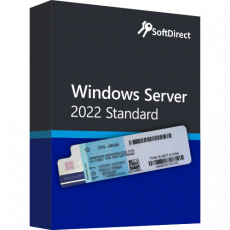Microsoft at the end of May presented by a Windows Server 2025 public preliminary which is now available in the Evaluation Centre. Windows Server 2025, which will be generally available later this year, promises advanced security features, enhanced hybrid cloud capabilities, and performance gains for existing applications and artificial intelligence (AI) workloads. Despite the excitement, it's worth examining whether this new version is a real breakthrough or just another incremental upgrade.
Advanced Security: meeting Modern Threats
Recently, cyber attacks have become increasingly sophisticated, so it was timely for Microsoft to focus more on security improvements. Windows Server 2025 introduces a number of security innovations:
- Active Directory developments: Improved identity management skills.
- SMB Over QUIC: Enhanced protection against brute force, spoofing and relay attacks.
- Hotpatching via Azure Arc: Security updates with fewer reboots.
These updates illustrate the importance of protecting businesses against modern cyber-attacks. However, some scepticism may arise when comparing these features with existing third-party security solutions, which some IT professionals believe already provide effective protection. It appears that Windows Server 2025 is finally catching up with industry standards.
Hybrid Innovation: bridging On-Premise and Cloud Solutions
Microsoft will continue its push for hybrid cloud solutions with Windows Server 2025, in line with their survey that 81% of hybrid cloud customers will continue to maintain this model for the next five years. Key features include:
- Software-Defined Networking (SDN): Improved multisite connectivity and unified network policy management.
- Azure Arc integration: Easier connection to Azure Arc and advanced management tools.
For those who have already invested in Azure, these developments are undoubtedly beneficial. However, companies that are still hesitant about committing to a hybrid model or using alternative cloud services are strongly advised to compare the benefits promised by Windows Server 2025 with the expected costs before making the switch.
AI, Performance and Scalability: ready for the future?
AI and machine learning workloads will play a central role in the Windows Server 2025, with improvements in GPU partitioning, network setup and storage performance. Specific advances include:
- GPU Partitioning: Live migration and failover clustering support for AI workloads.
- Network Adaptive Traffic Control (ATC) and Network Health and Usage Dashboard (HUD): Reduced time to troubleshoot network settings and problems.
- Hyper-V performance: Significant scalability and performance improvements.
Some IT professionals may question whether these improvements are sufficient to justify an upgrade from Windows to Server 2022, especially if their current infrastructure still meets performance expectations. However, as these features are designed to meet the needs of growing AI and data-intensive applications, the Windows Server 2025 could become a strong platform for future workloads.
Windows Server 2022 and 2025 Comparison: is it worth the upgrade?
When assessing the upgrade from Windows to Server 2022 to 2025, several factors need to be taken into account:
- Security Developments: While version 2025 offers advanced security features, many of these can be implemented with existing third-party solutions that are compatible with version 2022.
- Hybrid Capabilities: The deeper integration of Azure Arc and SDN enhancements are attractive, but only for those who plan to make significant investments in the transition to a hybrid model.
- Performance Improvements: Significant for AI workloads, but not necessarily necessary for all users.
-
 Windows Server 2022 RDS CALProduct on sale51 093 Ft
Windows Server 2022 RDS CALProduct on sale51 093 Ft -
 Windows Server 2022 User/Device CALProduct on sale7 495 Ft
Windows Server 2022 User/Device CALProduct on sale7 495 Ft -
 Windows Server 2022 Standard OEM COA199 990 Ft
Windows Server 2022 Standard OEM COA199 990 Ft
Ultimately, the decision to upgrade will depend on the specific needs of each organisation and how well the new features of Windows Server 2025 fit with their strategic IT objectives.
Customer success stories: the leaders
Many organisations have already used the Windows Server capabilities in innovative ways:
- CTT - Correios de Portugal: preparing for AI integration.
- Hokkoku Bank: Transition to a fully modernised cloud infrastructure.
- DICK's Sporting Goods: Improving the customer experience with Azure Arc and Kubernetes.
These stories demonstrate the potential of Windows Server 2025 to drive digital transformation, but also highlight that significant benefits often require significant investment in complementary technologies and services.
Progress with Reservations
The Windows Server 2025 is undoubtedly packed with new features and enhancements designed to address modern IT challenges. For those ready to take full advantage of these, this could be an attractive upgrade. However, the true value of these innovations will depend on the use cases and readiness to adopt new technologies.
Whether Windows Server 2025 becomes the cornerstone of your IT infrastructure or remains an option, it ultimately depends on how well it fits your organisation's specific needs and strategic vision.


